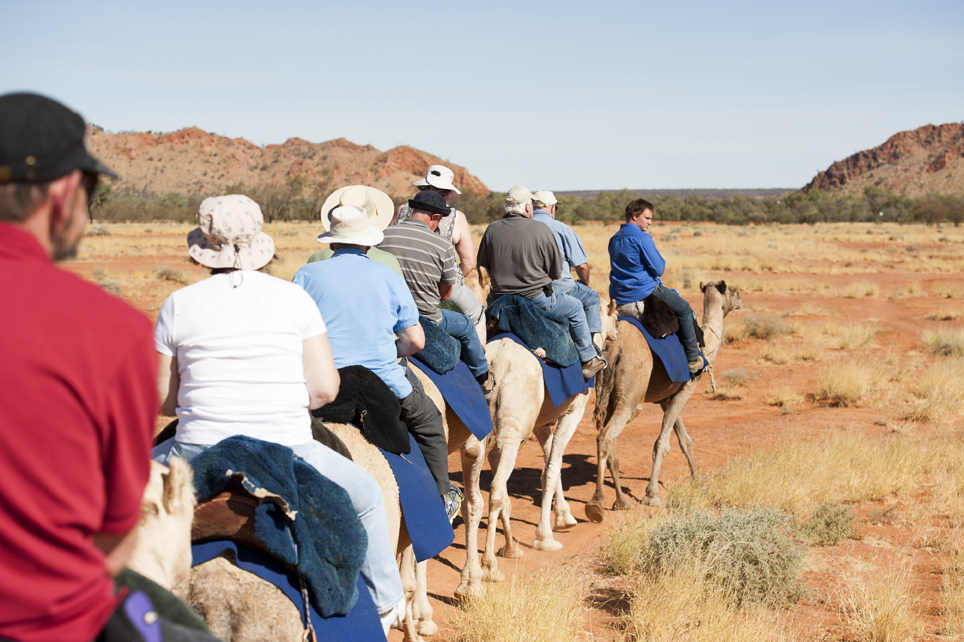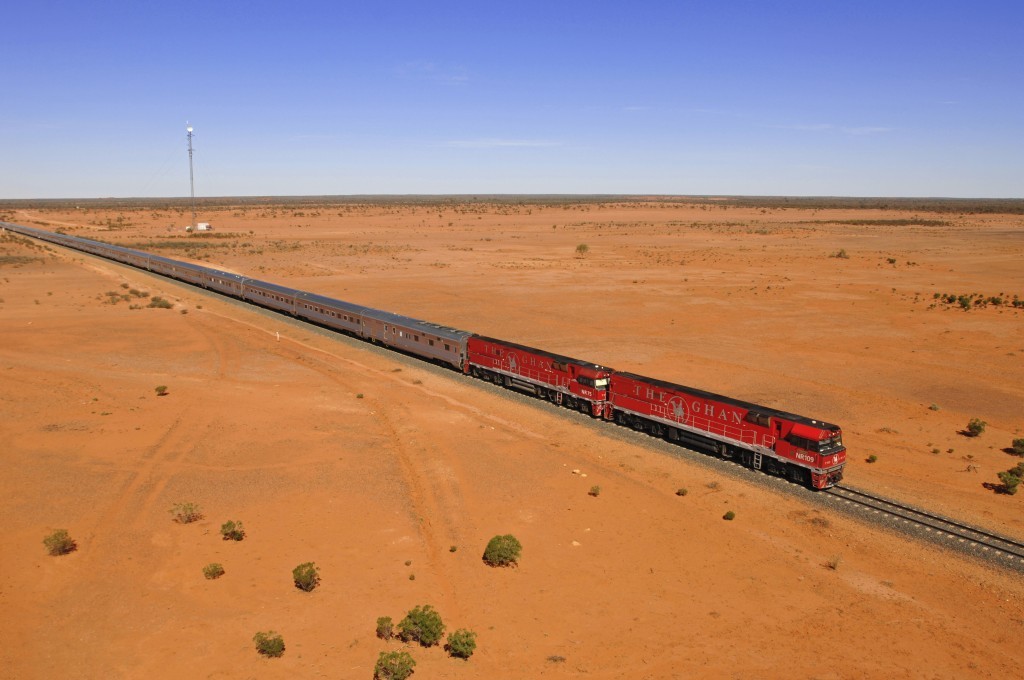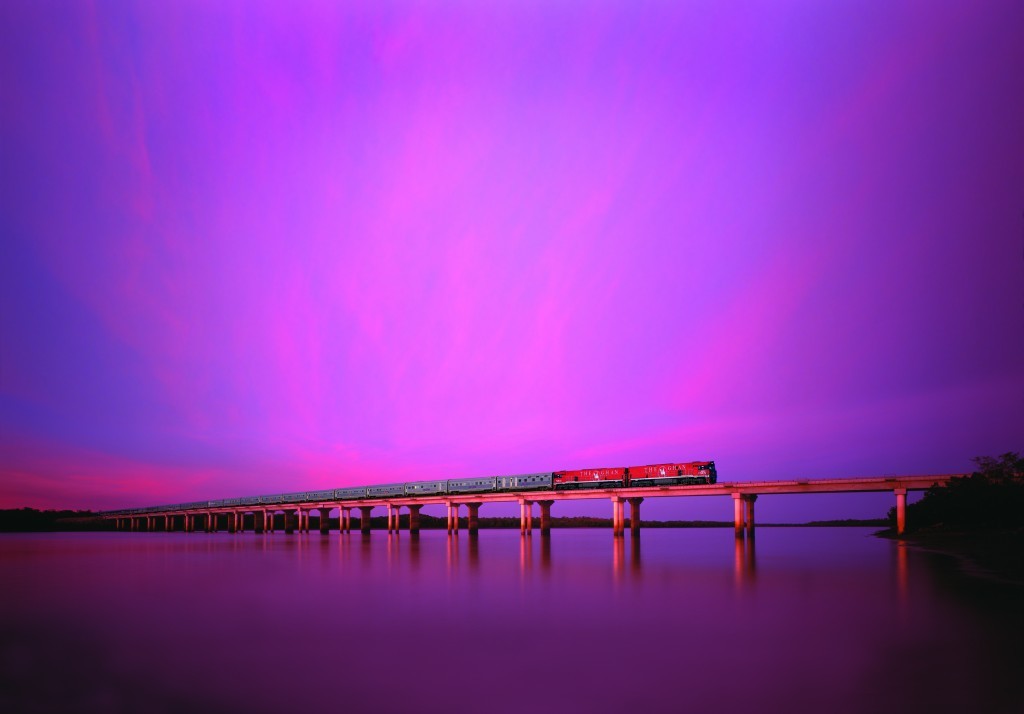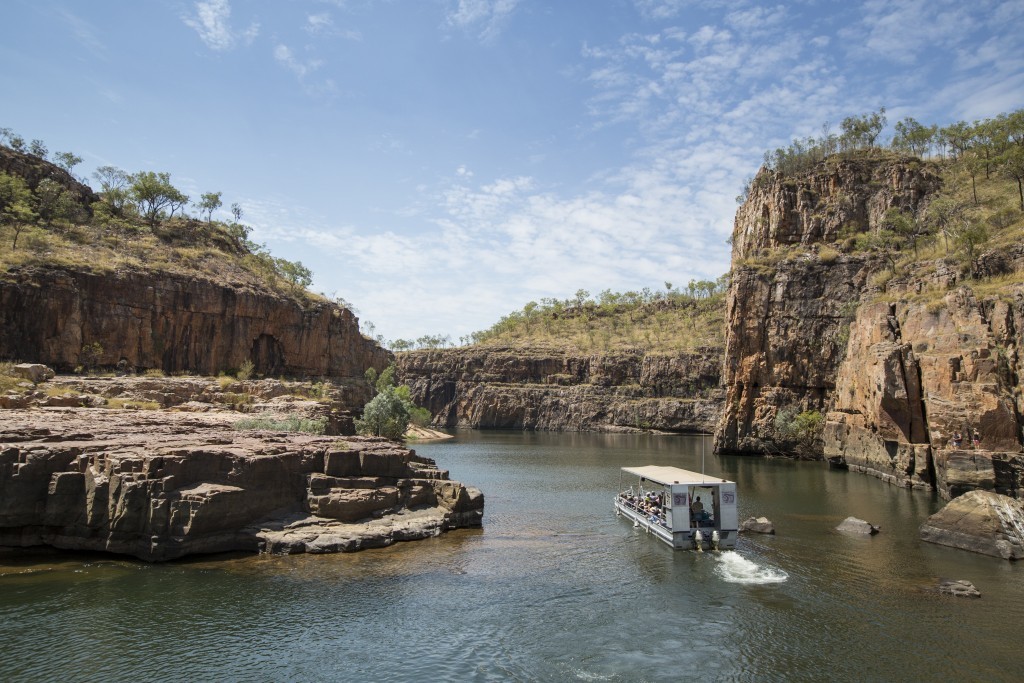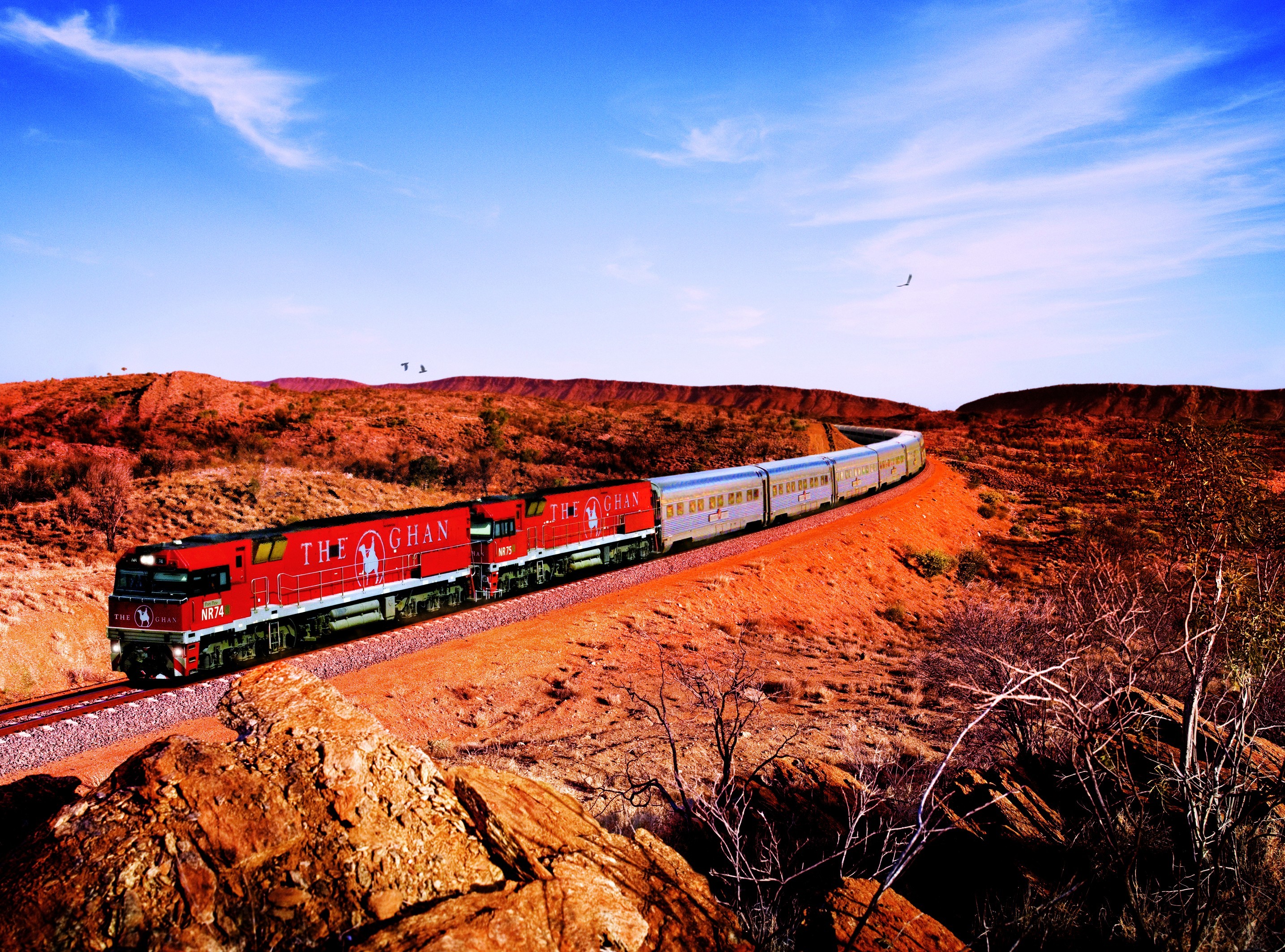
We’re enjoying time on one of the world’s greatest rail journeys, so we’re a little distracted. But if I’d paid more attention to our loco’s name, I probably wouldn’t have been so surprised by the dromedary in the desert.
Our train, the Ghan, which chugs 2,000 miles through the heart of Australia, was named after Afghan camel drivers who helped open up this remote continent.
In the 1800s, they carried supplies for workers building the railway, but when the line (from Adelaide to Alice Springs) was completed in 1829, they were out of a job and set their animals free in the desert. Now there are around a million wild camels in Australia.
Over the past 100 years, the railway has been re-routed several times, but it wasn’t until 11 years ago the line was extended right across the continent, allowing passengers to travel from Darwin on the tropical north coast, all the way to Adelaide in the south.
I’m on the new 4-day, Ghan Expedition trip, which includes various excursions en route.
Our first stop is Katherine where we visit Nitmiluk National Park, the traditional land of the Jawoyn people. While fellow passengers admire rock art on a cruise along the Katherine River, I take a scenic flight over the area’s sandstone gorges. Our pilot points out crocodiles, buffalo and waterfalls.
Back on the Ghan I sit in the Explorer Lounge, which has a gloriously old-fashioned feel, its burgundy leather chairs and sand-coloured interior blending into the desert around us.
I chat to Robyn, the restaurant manager, who’s travelled up and down Australia for the past eight years. I can’t help asking if she ever gets bored.
“Never,” she replies, “because I always glance out of the window at a different time in the journey.”
The Ghan’s meals reflect the regions we travel through. In the north, we dine on saltwater barramundi, kangaroo and crocodile. Further south, breakfast includes salmon from smokehouses in the Adelaide Hills. All food and most drinks are included, and the wine list has some glorious reds from the Barossa Valley.
I’m staying in a cabin with two bunks and a shower. I sleep with the blind up so as not to miss sunrise. As we pull into Alice Springs the next morning, the rocks of the Red Centre glow russet and gold.
We spend a full day in Alice, visiting the Flying Doctor Service Museum, Anzac Hill and a reptile centre, where the owner is so entertaining I almost forget there are snakes and Tasmanian Devils too.
But my favourite stop is at the old Telegraph Station. In a handful of 19th Century buildings, shaded by gum trees and overlooking the waterhole from which Alice Springs took its name, I meet enthusiasts from the Morse Code Society.
They invite me to send a telegram down the line which once linked London with Australia. Most of the original eucalyptus poles were eaten by termites, but one is still standing.
That evening, we have an outback barbecue and a sing-a-long round the camp fire. Then the Ghan presses on through the night.
On our third day we pull up at Manguri where the train, a staggering half-a-mile long, sits in a huge curve on a vast gravel plain. There’s no station, so Howard and Zofia, my cabin attendants, run up and down the carriages to line up steps with the doors.
Coaches take us to Coober Pedy, a settlement where most people live underground to escape the searing summer heat. It didn’t seem that odd to settlers who’d been used to living in the trenches, but the Aboriginal people named the place “White Man’s Burrows.”
The township grew up around opal mining; we hear tales of men who made (and lost) a fortune. Robyn organises lunch in a mine and we sit down at a beautifully-laid table in hard hats!
Gradually the red soil of the desert gives way to the green fields of South Australia, our journey almost over.
On my last morning, I decline the fry-up in favour of waffles, decorated with strawberries and covered in cream. “Think of it as brunch,” Robyn says with a smile.
As we draw into Adelaide, the Ghan gives a toot, telling us we’ve arrived. Having travelled in comfort and had time to explore, my journey’s been very different from the first cameleers. But I arrive with the same sense of elation.
The Flight Centre offers a 10-night trip to Australia, flying into Darwin and out of Adelaide, from £2,259 pp based on two sharing.
This includes economy flights from Heathrow, a gold cabin on the Ghan Expedition trip, and four nights in 4-star hotels in Darwin and Adelaide. Call 0800 258 5773 or visit flightcentre.co.uk.
For more on the Ghan, see great greatsouthernrail.com.au/
For info on Southern Australia see southaustralia.com
READ MORE

Enjoy the convenience of having The Sunday Post delivered as a digital ePaper straight to your smartphone, tablet or computer.
Subscribe for only £5.49 a month and enjoy all the benefits of the printed paper as a digital replica.
Subscribe